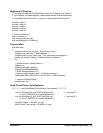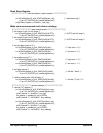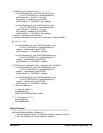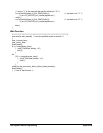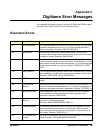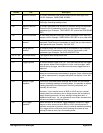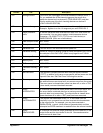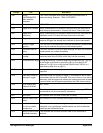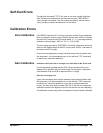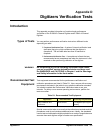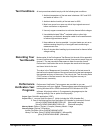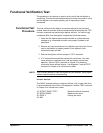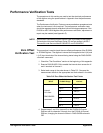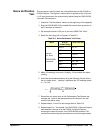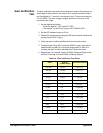
Digitizers Error Messages 149Appendix C
Self-Test Errors
The self-test command (*TST?) will return a non-zero number if self-test
fails. Self-test error descriptions are retrieved using the TEST:ERRor?
<test_number> command. Use the number returned by self-test as the
<test_number> to obtain the description of the failure.
Calibration Errors
Zero Calibration CAL:ZERO[<channel>]:ALL? returns a non-zero number if zero calibration
fails. For example, a return value of 0x0021 (binary value 100001) indicates
that the 62 mV range and the 64V range failed. A “1” in the range position
indicates a failure (range = 256, 64, 16, 4, 1, 0.25, 0.062).
The error string returned by SYST:ERR? will contain information about the
failure on the highest range (for 0x0021, binary value 100001, information is
returned on the 64V range).
A zero non-converging error usually indicates some internal problem with
the instrument. It is recommended you run the self-test (*TST command)
to identify any instrument problems.
Gain Calibration Calibration value (CAL:VALue <voltage>) not within 85% to 98% of full scale.
You have entered a voltage with the CAL:VALue command that is not
between 85% and 98% of the full scale range. For example, a calibration
value between 0.85 and 0.98 is required on the 1V range
Gain Non-converging error
A gain non-converging error usually indicates some internal problem with
the instrument. It is recommended you run the self-test (*TST command)
to identify any instrument problems. If you use an external calibration
source, you may have set the correct CAL:VALue but did not connect the
calibration source to the digitizer’s input for the channel you are calibrating.
The calibration source may still be connected to the last channel calibrated.



